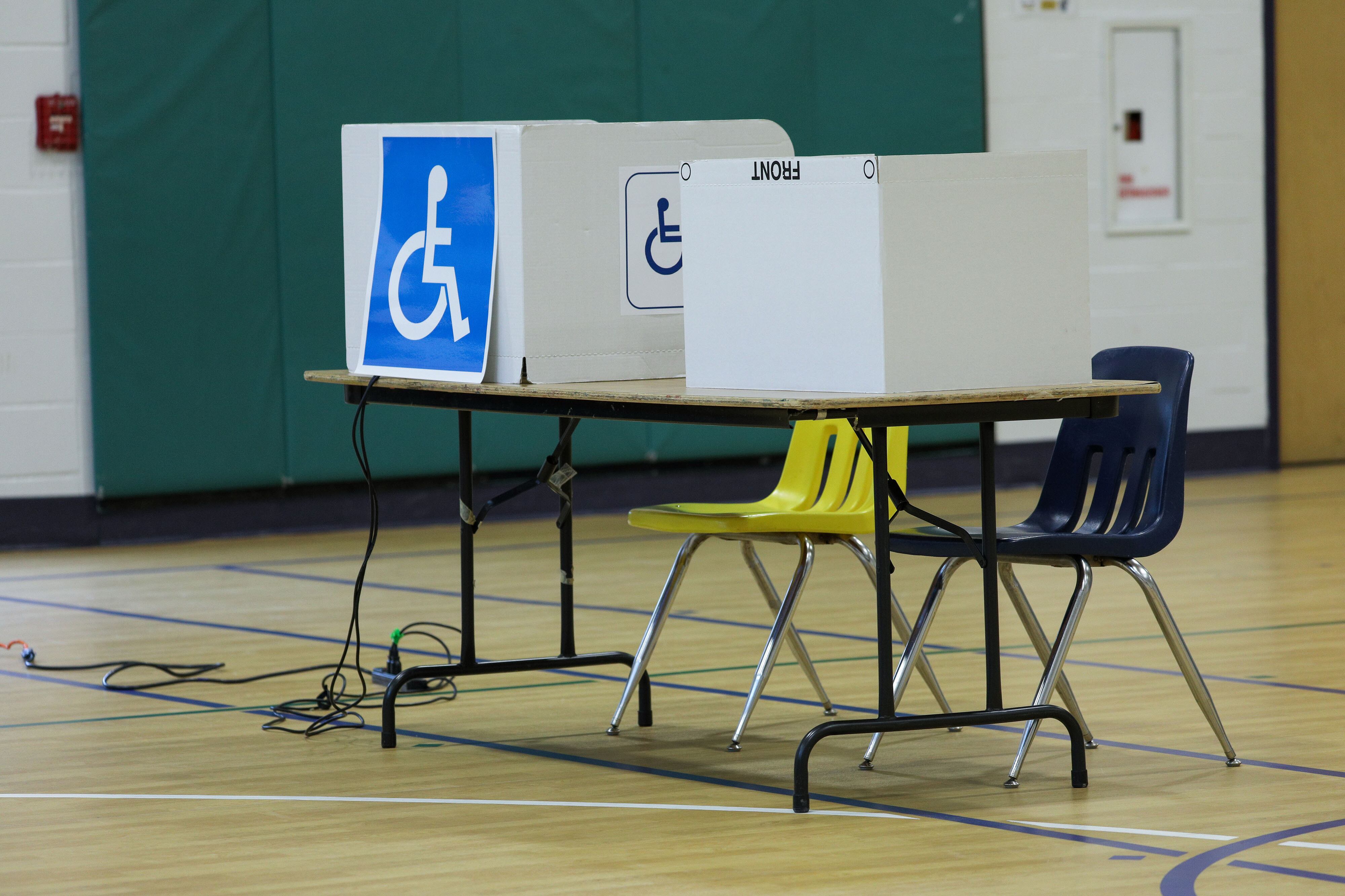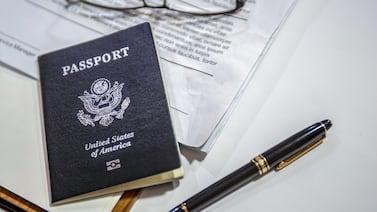Votebeat is a nonprofit news organization reporting on voting access and election administration across the U.S. Sign up for Votebeat Wisconsin’s free newsletter here.
Some voters with disabilities will be able to receive and mark their ballots electronically at home in the November election under a Dane County court order issued Tuesday. But the state’s top election official has stated the required technology will be hard to implement by then.
The temporary injunction giving Wisconsinites with disabilities more accessible voting options marks a significant but incomplete win for a group of plaintiffs with disabilities who sued the state seeking better voting access. Many of them have had to sit out elections because of hurdles that keep them from voting in person and that make absentee voting in private challenging or virtually impossible.
Under the current order, they could vote electronically in November but would have to print and return their completed ballot in person or by mail, something they can receive assistance to do. In the long run, the lawsuit seeks an option to return ballots electronically as well.
“It’s an exciting and a very important day, and we look forward to the next steps,” said Don Natzke, one of the plaintiffs, who is blind. “I’m really excited about the possibility of having the chance to have an accessible absentee ballot by November.”
The plaintiffs in the case originally sought an order allowing them to vote electronically for the August and November elections. They modified their request to include only the November election after Wisconsin Elections Commission administrator Meagan Wolfe said the requested relief would be “virtually impossible” to implement for both elections.
“Even the most minor change generally requires two to three months of work under ideal conditions, while major changes typically require eight to twelve months to complete,” she said in a court file ahead of the ruling.
Under state law, federal elections, like the November one, allow extended time for voting in Wisconsin. Clerks begin sending out absentee ballots 47 days ahead of the election, which in this instance would be mid-September.
Relaying the change to clerks poses its own hurdles, Wolfe said.
“Approximately two-thirds of the local clerks responsible for conducting elections are employed part-time,” Wolfe said in a court filing. “Communicating significant changes to the clerks, making necessary modifications to computer applications, and ensuring consistent implementation across the state would pose a significant challenge under a compressed timeline.”
But the plaintiffs celebrated the ruling.
“I’m EXTREMELY happy with the news today!” Stacy Ellingen, one of the plaintiffs, said in an email. Ellingen, who has athetoid cerebral palsy and lacks the fine motor skills to fill out a paper ballot herself, types using an enlarged keyboard and an eye-controlled communication system.
“To think that I’ll be able to fill out my ballot in November by myself is really an exhilarating feeling!” Ellingen said. “I’ll still have to have assistance returning it, but I will be able to physically fill out myself! This is very exciting news for people with disabilities.”
Lawsuit follows years of voting hurdles
The lawsuit that led to the injunction was filed by four voters with disabilities who, along with Disability Rights Wisconsin and the League of Women Voters of Wisconsin, sued the Wisconsin Elections Commission in April to allow them to receive and return absentee ballots electronically, just as military and overseas voters in many other states do.
Some of the plaintiffs are blind or have low vision. To vote absentee, the plaintiffs have to rely on assistance, something they say is unconstitutional, because the Wisconsin constitution guarantees the right to a secret ballot.
In filing the case and requesting electronic voting, the plaintiffs pointed to the 13 states that allow voters with disabilities to electronically fill out and return absentee ballots. Other states including Vermont, Michigan, Maryland, and Pennsylvania allow voters with disabilities to fill out ballots electronically, though depending on the jurisdiction, the voters may have to print and return them by mail, drop box or in person.
Election security experts, including in federal agencies, have voiced concerns about returning ballots electronically. They say the technology and systems required to make the ballot return option safe don’t currently exist or haven’t been tested. They’ve raised far fewer objections to receiving and marking ballots electronically.
Seeking emergency relief, the plaintiffs asked for just electronic delivery and marking of ballots for the August and November elections, later modifying their request just to the November election. They’re still seeking electronic return options as well as electronic voting in every election, and that aspect of the lawsuit will continue.
Dane County Circuit Court Judge Everett Mitchell granted the narrower request Tuesday after the Wisconsin Elections Commission warned him in court filings that it may not have enough time to implement the change.
He said the ruling would apply to people with print disabilities, including people who are blind or have a physical disability preventing them from independently reading or marking a paper ballot.
Top election official says implementing the system will be hard
Wolfe, Wisconsin’s top election official, said the election commission, the IT departments supporting it, and clerks would each face significant challenges trying to implement the plaintiffs’ request in time for the November election.
That’s especially so, she said, because the changes the plaintiffs proposed and were granted “would interface with—and thus put at risk—many other technical components,” including workflows to track ballots and requests for them, the voter-registration database, and other processes at the local and state levels.
“A flaw anywhere in the new process could cause an outage in any (or all) of the other components,” she stated.
Technical changes to election systems are implemented through a six-part process: planning, analysis, design and development, testing, implementation, and maintenance, Wolfe said. Commission staff would have to complete the first two steps just to figure out how long it would take to implement and roll out the electronic voting program, and testing the changes would take anywhere from a few days to months, she said.
The timeline is further delayed by restrictions set by the Wisconsin Department of Administration’s Division of Enterprise Technology, which hosts the election commission’s voting-related systems, Wolfe said.
The enterprise technology division has so-called change-freeze periods, during which it can’t modify IT infrastructure. Those periods exist around all legal holidays and 30 days ahead of scheduled elections, Wolfe said.
Additionally, the election commission’s four-member software-development team is dedicated to maintaining existing systems, not designing new ones, further limiting the possibility of creating the new system on time, Wolfe said.
The problems trickle from the state to the local level, Wolfe said, because the commission would have to develop and approve electronic voting first, and then provide clerks with training materials to show them how to implement it.
Designing those materials and getting them to the over 3,000 local clerks and election staff would take around three months, Wolfe said. Another hurdle is orienting clerks to the new process, especially the many clerks who work part-time. Some work as little as a few hours each week.
Beyond those hurdles, “not all clerks have government-issued email addresses,” Wolfe said, “which can make it difficult for voters to verify that an email that purports to contain an official ballot is genuine.”
“Email inboxes can also be hacked and email addresses mimicked in ways that their physical analogues cannot be,” Wolfe continued.
“Every time you say it, it is a shock to my system that not all clerks have government email,” Mitchell said in a Monday hearing after Assistant Attorney General Karla Keckhaver highlighted that point.
“It’s very clear, on this tight timeframe, the public interest weighs in favor of the defendants in this case and not rushing to implement these changes,” Keckhaver said.
Natzke, one of the plaintiffs, said he trusts that the commission can implement the technology on time.
“Though they have a very difficult and challenging job, I think it’s impressive the quality of the work they do and the way that they proceed,” he said about the commission. “So I think they, with this impetus and with the will to accomplish it, I do think it’s practical that they’ll successfully implement it.”
Elections commission spokesperson Riley Vetterkind declined to comment for this story, referring Votebeat to court files to explain the agency’s time constraints. It’s unclear whether the commission will appeal the order, but Debra Cronmiller, executive director of the League of Women Voters of Wisconsin, said she’s expecting an appeal.
Alexander Shur is a reporter for Votebeat based in Wisconsin. Contact Alexander at ashur@votebeat.org.




